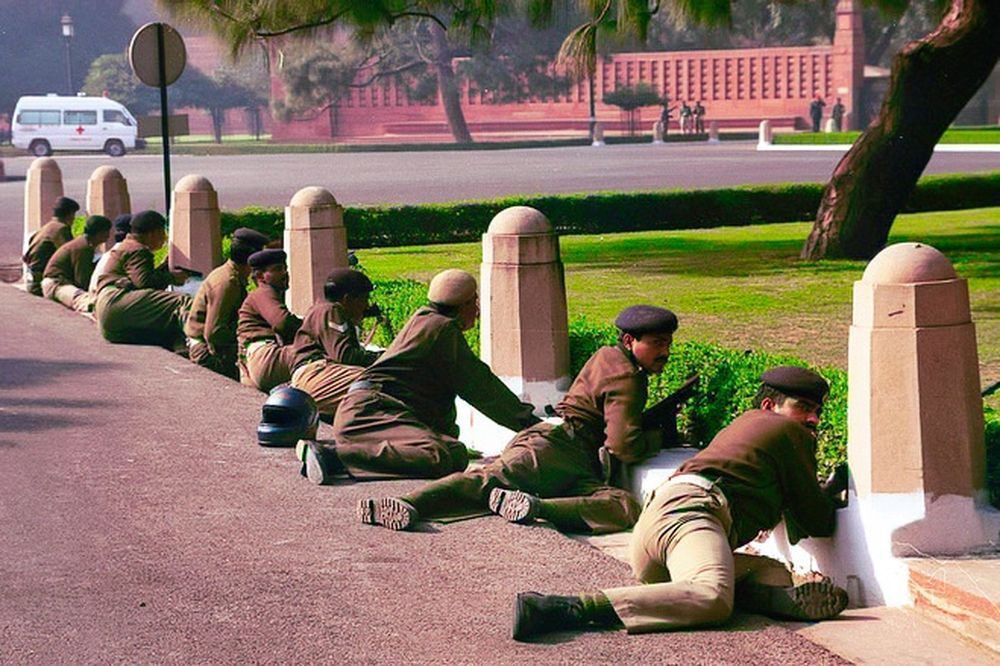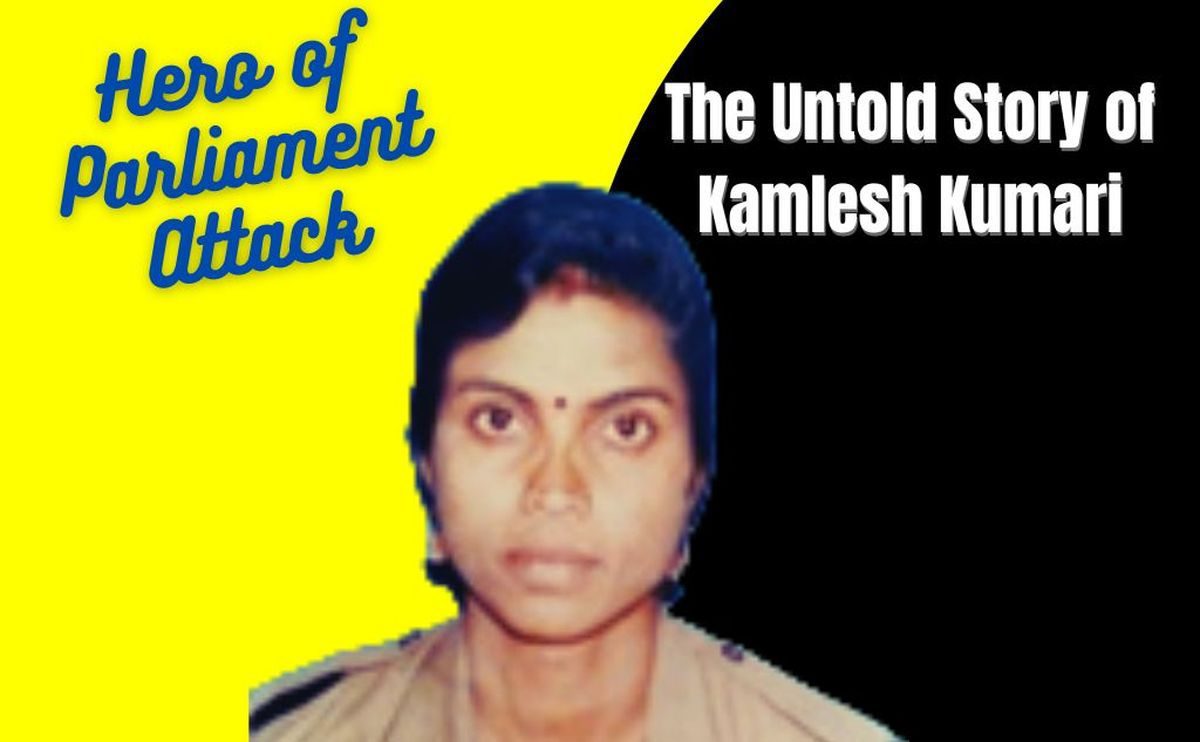It was a quiet and peaceful day like any other on December 13, 2001. The Indian parliament was functioning and dealing with lawmaking duties, when a white Ambassador brand car, bearing the license plate number DL 3C J 1527, drove towards the gate from Vijay Chowk.
Ambassador was widely used by parliamentarians and diplomats then, and, to an extent even today, for official travels.
It carried a red beacon used by lawmakers, high-ranking diplomats, and most VIPs during those days.
It also carried relevant permission and sticker, but something was still amiss, perhaps the way it was driven.
Kamlesh Kumari Yadav was on duty and had seen hundreds of these white Ambassadors pass through her eyes could see there was something unusual about the way this car was moving.
Yadav was the first security official to approach the car. The car suddenly increased its speed instead of slowing down or maintaining speed.
Equipped with only a constable’s baton and a walkie-talkie, Kamlesh Kumari started following the car and spotted 5 men, all heavily armed heading towards the building.
As soon as she noticed it, she raised the alarm – shouting as well as on the walkie-talkie.
This first step from her gave the CRPF personnel a few additional crucial seconds to tackle the terrorists.
Realizing the seriousness of the situation, even when faced with the prospect of being in the line of fire of 5 heavily armed and trained terrorists, she ran back to her post to seal the gate.
The terrorists, with their cover, effectively blown and unable to travel further due to Kumari’s foresight, opened fire.
Eleven bullets struck Kamlesh Yadav in the stomach. The attack occurred at 11:50 in the morning. She was unfortunately the first victim of the attack.
Kamlesh Kumari Yadav’s alertness prevented a suicide bomber among the terrorists from executing their plan — the courage shown by her in the closing of Gate No. 1 and then raising an alarm gave crucial time for other security personnel to take a position and neutralize the would-be bomber.
Prior to the incident, many members of parliament (MPs) and government officials such as Home Minister LK Advani and Minister of State for Defence Harin Pathak were believed to have still been in the building at the time of the attack.
It is estimated that more than 100 people, including major politicians, were present during the attack.
The stakes were never higher, lawmakers who were responsible to run the country were in the building. A successful attempt there by the terrorists would have affected the morale of the whole nation for years to come.
The message, if the parliament can’t be safe how can the countrymen?
If not for her prompt and courageous actions, one can only wonder how many lives could have been lost to the terrorist attack

Kamlesh Kumari Yadav was instrumental in restricting the terrorist attack to outside the parliament, shielding the legislators.
Other CRPF officials, including Santosh Kumar, were now alerted to pursue the terrorists. Santosh gunned down 3 more terrorists.
The attack led to the deaths of six Delhi Police personnel, two Parliament Security Service personnel, and a gardener – in total 9 – and led to increased tensions between India and Pakistan, resulting in the 2001–02 India–Pakistan standoff.
The 5 terrorists were all killed outside the parliament, without having a chance to enter the building. All the lawmakers including the ministers escaped unhurt.
Delhi Police stated that five terrorists carried out the attack and the names given by them were: Hamza, Haider alias Tufail, Rana, Ranvijay, and Mohammed. They were members of the banned Kashmir-based outfit Jaish-e-Mohammed.
The Indian Government initially accused Lashkar-e-Taiba and Jaish-e-Mohammed of involvement in the attack. However, Lashkar-e-Taiba denied any involvement in the incident.
On November 2002, four JeM members were arrested by Indian authorities and put on trial.
All four were found guilty of playing various roles in the incident, although the fourth, Afsan/Navjot Sandhu, wife of Shaukat Hussain (one of the accused) was found guilty of a minor charge of concealing knowledge of the conspiracy.
One of the accused, Afzal Guru, was sentenced to death for the incident.
Kamlesh Kumari Yadav was honored with the Ashoka Chakra during Republic Day 2002 – the first policewoman to be bestowed the award.
She is survived by her husband, Avdhesh Yadav, and two daughters, Jyoti and Shweta. They have grown up listening to stories of their mother’s bravery and knowing that she died a hero.
A tale will go on to inspire hundreds of girls joining the para-military forces to serve their country just as bravely as she did.
Her bravery remains one of the highest examples of service to the nation without caring for self-harm. Though in the annals of history this remains relatively unknown, it’s a hope that this tale of courage is known to the wider Indian population.



